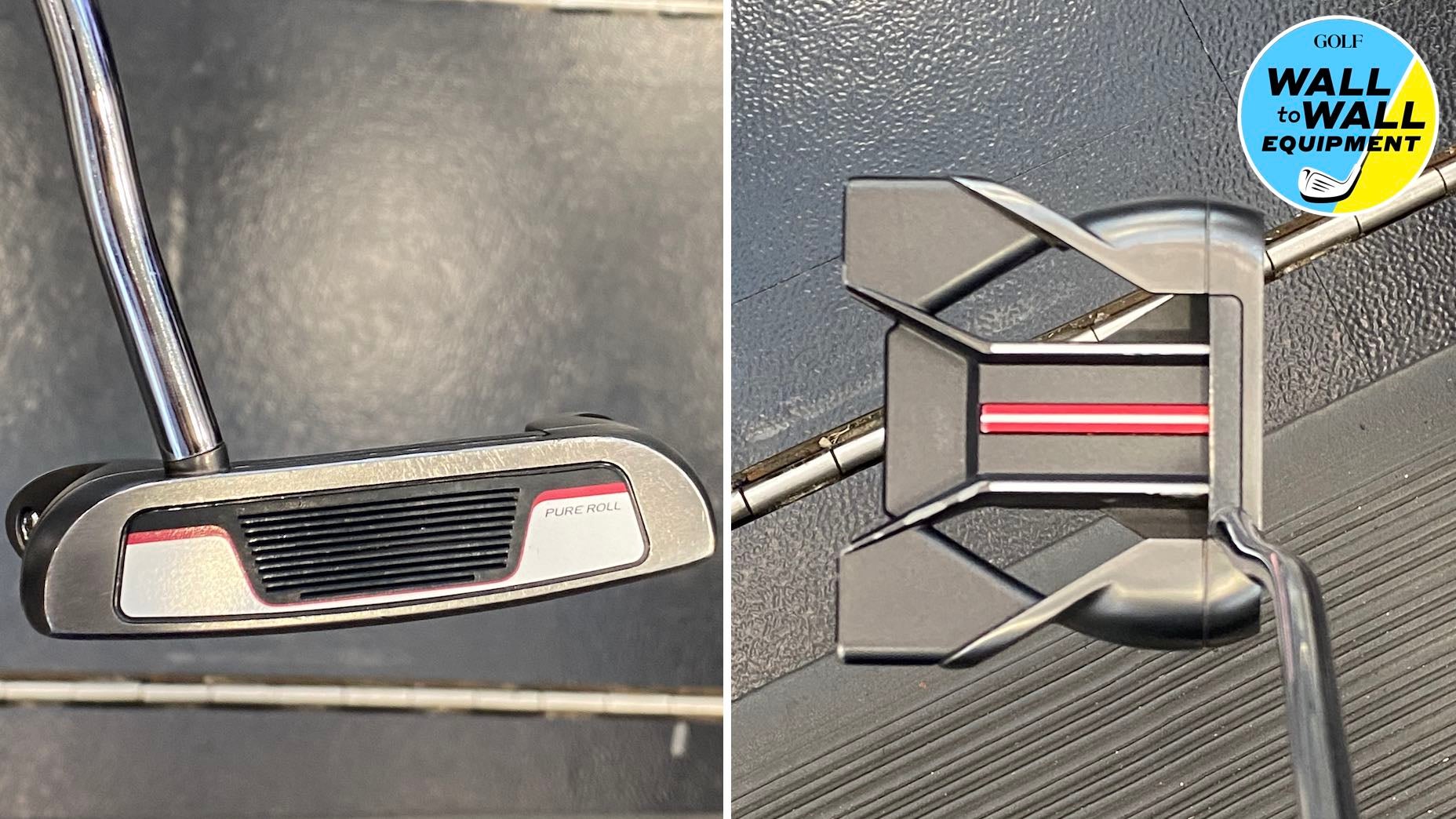
Welcome to Wall-to-Wall Equipment, the Monday morning gear wrap-up in which GOLF equipment editor Jonathan Wall takes you through the latest trends, rumors and breaking news.
Sizable putters
One has 18 major titles. The other won his first on Sunday at Royal Liverpool. On paper, comparing Brian Harman’s resume to Jack Nicklaus’ historic accomplishments feels like a massive stretch. But hear us out. The two are actually connected by something other than major titles — a club that made Nicklaus nearly unbeatable on golf’s biggest stage. Harman, too.
We’re, of course, talking about the putter.
In Nicklaus’ case, the oversized MacGregor Response ZT (Zero Twist) 615 he used to win the 1986 Masters — a putter that helped establish the USGA’s width limit due to its abnormally large size.
Before mallets elbowed their way into the marketplace, putters like Nicklaus’ Response ZT were a rare sight. The putter looked like a traditional blade, but the extensive profile allowed it to impact the ball with little to no twisting at impact. With a higher Moment of Inertia, returning the face to square on a consistent basis was noticeably easier to accomplish with the Response ZT.
The putter just so happened to be the brainchild of club designer Clay Long, who played a major role in the development of many Nicklaus creations during his heyday. By now you’re probably wondering why we’re discussing Nicklaus’ equipment when Harman won the Open Championship on Sunday.
Getty Images
Here’s the connection: Not only did Long create the putter Nicklaus used to win his final major in 1986, but he also developed the 35.5-inch TaylorMade Spider OS CB (G3 swingweight) Harman used to win his first major.
Following a recent trend of older putter models having a resurgence on Tour, Long introduced the oversized Spider OS CB mallet in 2016, believing the larger profile that helped Nicklaus find his stroke could have similar benefits for the modern-day consumer.
Thus, the OS CB (Counterbalanced) was born. What’s interesting about Harman’s specific putter is that it was 0.3 inches larger than the OS head, making it roughly 13 percent larger than the standard model. While the putter offered plenty of performance benefits — reduced head twisting and a generous MOI — the OS CB saw little to no action on the PGA Tour, outside of Harman.
The putter has been part of his setup in some capacity since 2016 when it was introduced, but even the newly minted Open champion admitted the wand hasn’t always behaved. In fact, he revealed during the tournament that he considered “going to the bullpen and pulling out something different” during the middle of the season.
“It’s been a good putter, but she’s been misbehaving a lot this year,” he said. “Last few weeks I found a little something on the greens that I felt like gave me a little better roll. I had one really nice day of putting at the US Open, and then the following weeks I putted really nice.”
The threat of a trip to the “timeout closet” got the club back on track as Harman cruised to victory while gaining more than 11 shots on the field with just the putter. An oversized profile might not be for everyone, but as Harman proved time and time again at Royal Liverpool, the only thing that really matters is the level of trust you have in the putter on Sunday afternoon.
The replacements

Getty Images
The rain kept Royal Liverpool from playing firm and fast during the tournament week, but it didn’t stop several big names from replacing high-lofted fairway woods with long irons. Jordan Spieth added a Titleist T150 Prototype 3-iron (Graphite Design Tour AD DI-105 Hybrid X shaft) and Collin Morikawa opted for a TaylorMade P790 Prototype 3-iron. Forgiving long irons like the Titleist T200 also saw action during the Open Championship.
“Lots of tee shots call for certain distances,” said Titleist Tour rep J.J. Van Wezenbeeck. “You need to be able to shape and flight it.”
While some players will continue on with their new long irons, expect to see many return to high-lofted fairway woods in preparation for the playoffs.
Seeing red
If one TaylorMade Spider doesn’t behave, go back to the one that made you a world-beater. For Jason Day, that meant dusting off Spider Red Itsy Bitsy (paint chips and all) for the Open Championship. The putter change didn’t lead to a Claret Jug, but it did help the Aussie finish in a tie for second with Sepp Straka, Jon Rahm and Tom Kim at 7-under.
Day ranked 13th in the field in SG: Putting (plus-4.48) with the red Spider he helped popularize in 2016. The putter was so popular, in fact, TaylorMade initially struggled to keep up with demand on Tour when it was first released. With Day leading the charge, Spider Red quickly became the hottest putter in the professional ranks during the 2015-16 season.
Quick-hitters: Max Homa and Justin Thomas added 60-degree Vokey A-Grind lob wedges to allow the club to slide under the ball easily. … Mizuno’s latest woods and wedges made their Tour debut at the Open Championship. … Phil Mickelson switched to a Ping G430 LST driver and G430 Max 3-wood. … Hideki Matsuyama’s latest Scotty Cameron putter is a sight to behold.
Want to overhaul your bag for 2023? Find a fitting location near you at True Spec Golf.








